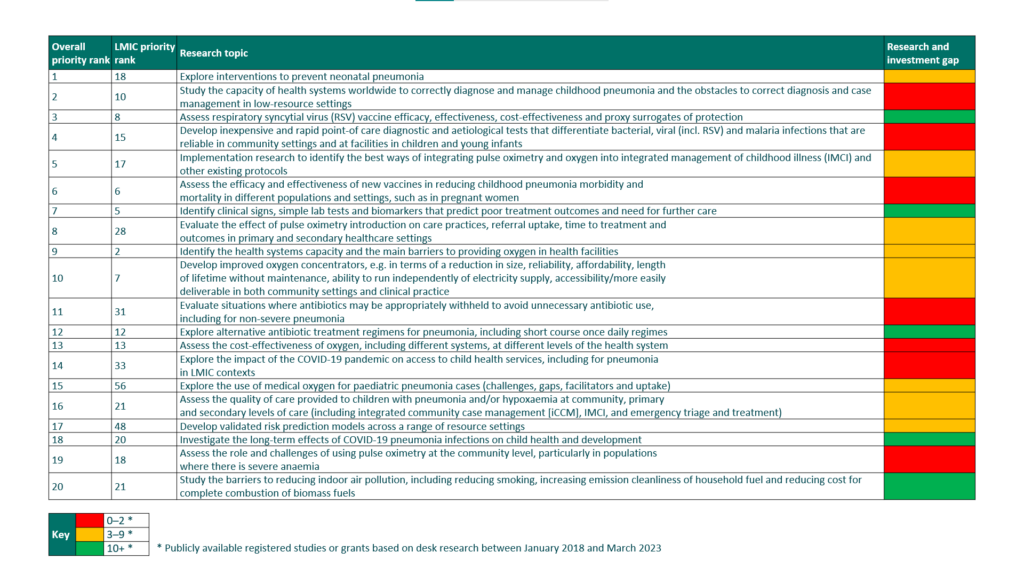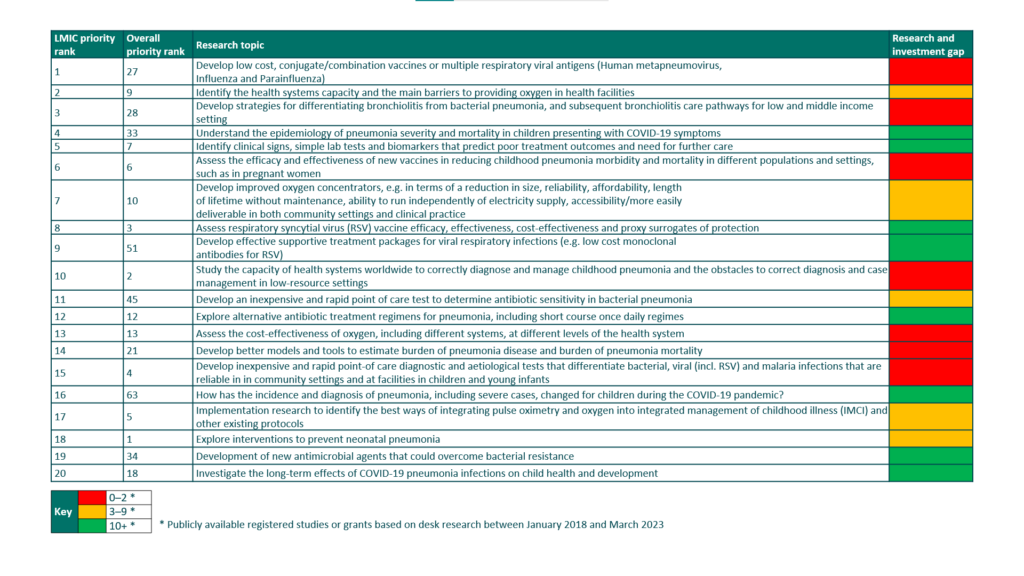
Child Pneumonia Research Investment Scorecard
In 2020 and 2021, the Every Breath Counts Coalition surveyed more than 100 academic experts across the globe to determine a set of childhood pneumonia research priorities to guide researchers and funders in the countdown to 2030. The results were published in the Journal of Global Health in 2022. The results of the survey were used to compile a Child Pneumonia Research Investment Scorecard which lists the top 20 priorities for childhood pneumonia research against the number of registered research grants and studies focused on each priority, based on a database search between January 2018 and March 2023.
The first scorecard (A) below lists the top 20 research priorities from all of the experts surveyed. It reveals that 75% of the top 20 childhood pneumonia research priorities are the subject of less than 10 registered studies or grants. The second scorecard (B) lists the top 20 research priorities from experts based in low- and middle-income countries. It reveals that 60% of the top 20 childhood pneumonia research priorities are the focus of less than 10 registered studies or grants.
Why does this matter?
Pneumonia is the leading infectious cause of death in children under five and the stubbornly high number of deaths – 670,000 according to the Global Burden of Disease – is a major stumbling block to achievement of the Sustainable Development Goal for child survival (SDG 3.2). The worst-affected countries are in Africa and Asia where 80% of child pneumonia deaths are occurring.
Research can play a major role in preventing childhood pneumonia deaths, but currently less than 3% of infectious disease research funding is spent on pneumonia, according to the Sizing Up Pneumonia Research report. The relatively small amount of funding that is allocated to pneumonia research is focused on vaccination, leaving other prevention, as well as diagnosis and treatment areas dramatically underfunded. How can an infection that causes 13% of child deaths attract less than 3% of infectious disease research funding?
The Child Pneumonia Research Investment Scorecard reveals that not much has changed since the publication of this report. Accordingly, Every Breath Counts calls on research funders to increase their investments in childhood pneumonia research and to target new investments to the research priorities color coded red and orange on the scorecards. It is vital that research funders pay close attention to the priorities of low- and middle-income country pneumonia experts, which differ from their colleagues in high-income countries in critical ways.




